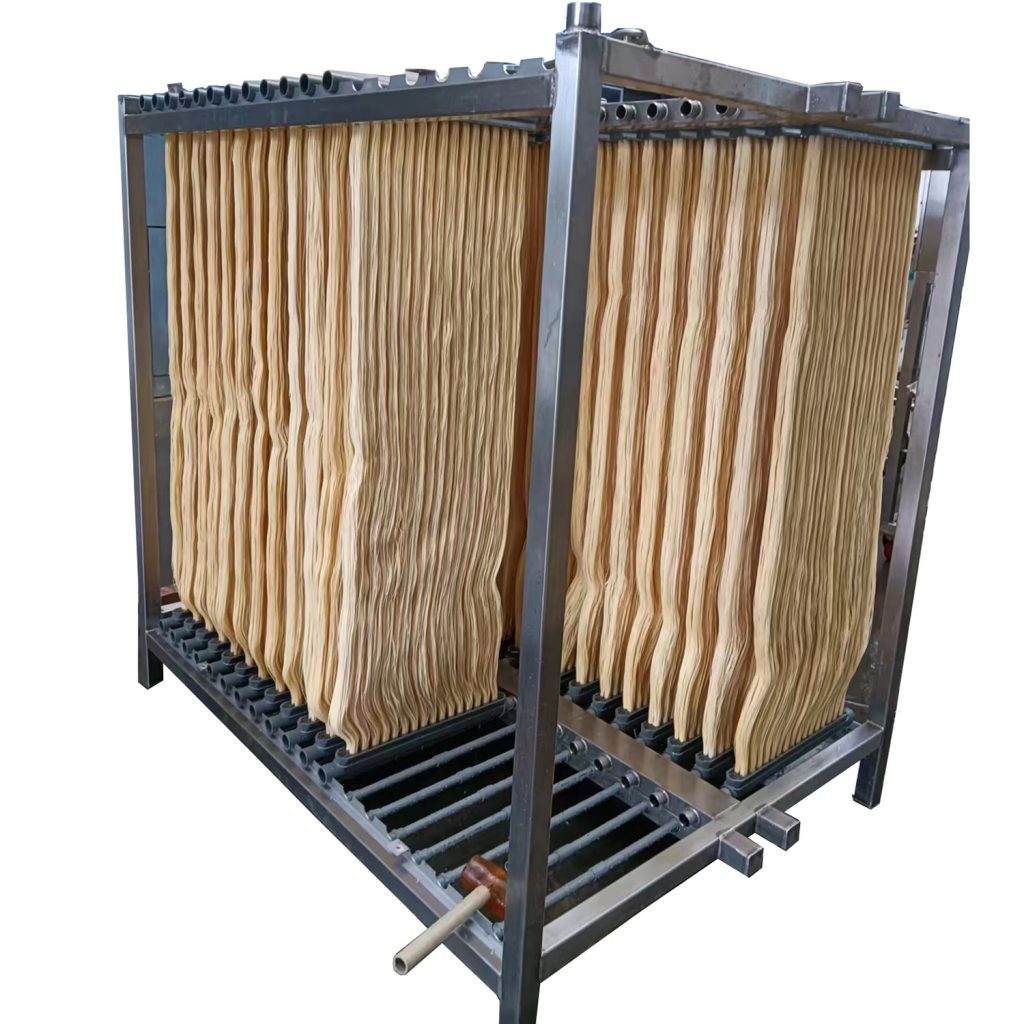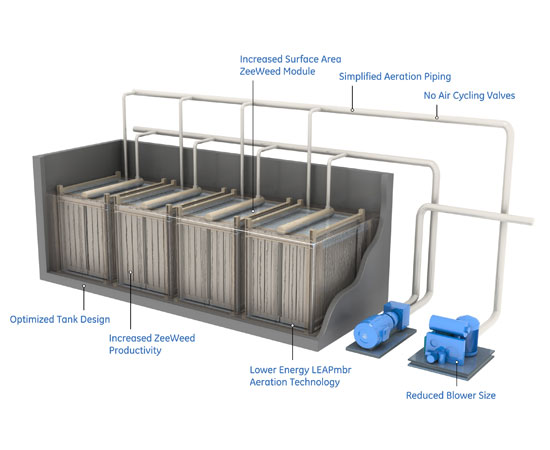How Membrane Bioreactor Contributes to the Reduction of Energy Consumption in Water Treatment
How Membrane Bioreactor Contributes to the Reduction of Energy Consumption in Water Treatment
Blog Article
Membrane Bioreactors Clarified: Effective Solutions for Tidy Water
Membrane bioreactors (MBRs) have become an innovative solution for addressing journalism obstacles of wastewater treatment. By incorporating biological processes with sophisticated membrane filtering, MBRs not just enhance the high quality of cured water yet likewise minimize the spatial demands of therapy facilities. As environmental issues heighten, the role of MBR technology in promoting sustainable water management comes to be increasingly significant. Nevertheless, the complexities of their procedure, advantages, and potential applications merit a closer assessment to fully understand their impact on the future of water treatment.

What Are Membrane Bioreactors?
Membrane bioreactors (MBRs) are innovative wastewater treatment systems that combine biological degradation procedures with membrane filtering technology. This combination enables for the reliable elimination of contaminants from water, making MBRs a preferred choice in different applications, including community wastewater treatment and industrial effluent management.

One of the critical benefits of MBRs is their capability to create premium effluent, frequently ideal for reuse in irrigation or commercial procedures. In addition, MBRs need a smaller sized footprint compared to standard treatment systems, making them excellent for metropolitan settings where room may be limited.
Additionally, MBRs can efficiently take care of varying influent loads and are much less susceptible to the impacts of toxic shocks. These characteristics add to their growing appeal as a sustainable solution for attending to the increasing need for tidy water while minimizing environmental influences.
How Membrane Layer Bioreactors Work
While the procedure of membrane layer bioreactors (MBRs) might seem facility, it essentially focuses on the harmony between organic procedures and membrane filtration. MBRs integrate an organic therapy procedure, commonly turned on sludge, with a membrane layer separation system to treat wastewater efficiently.
In an MBR system, wastewater is first introduced right into a bioreactor where microorganisms deteriorate raw material and other contaminants. The biological task minimizes the focus of pollutants while promoting the growth of biomass. Following this biological therapy, the blended liquor is subjected to membrane layer filtering, which can be microfiltration or ultrafiltration, depending upon the desired effluent top quality.
The membranes function as a physical barrier, enabling water and tiny solutes to pass while retaining suspended solids and larger particles. This makes it possible for the system to keep a high focus of biomass within the activator, boosting the therapy performance.
In addition, the constant separation of treated water from the biomass helps with a compact style and decreases the impact of the therapy facility. Overall, the mix of organic deterioration and membrane layer filtration in MBRs results in reliable and reliable wastewater treatment, ensuring top quality effluent appropriate for various applications.
Advantages of MBR Technology
Among the essential benefits of membrane bioreactor (MBR) technology is its capacity to produce premium effluent with a substantially decreased impact contrasted to standard wastewater click here to read treatment approaches. MBR systems successfully check my reference integrate organic treatment and membrane layer filtration, leading to remarkable removal of impurities, including put on hold solids, virus, and raw material. This capability leads to effluent that frequently fulfills or surpasses rigorous regulatory standards for reuse and discharge.
In addition, MBR innovation enables higher biomass focus, which improves the treatment effectiveness and reduces the needed reactor volume. This small design is specifically useful in city areas where space is restricted. The functional flexibility of MBR systems likewise implies they can adjust to varying influent high qualities and circulation rates, making them ideal for a large range of applications.
In addition, the lowered sludge production connected with MBR processes adds to lower operational and upkeep prices. The membranes act as a physical obstacle, reducing the danger of clogging and allowing longer functional durations in between cleaning. Generally, the benefits of MBR modern technology make it an attractive service for sustainable wastewater treatment, attending to both ecological problems and the requirement for reliable source administration.
Applications of Membrane Layer Bioreactors
With their versatility and effectiveness, membrane bioreactors (MBRs) discover applications across various industries, including local wastewater treatment, commercial processes, and also water recovery. In community setups, MBRs provide a compact service for dealing with wastewater, successfully eliminating impurities while simultaneously generating top notch effluent that fulfills stringent governing standards. This makes them specifically ideal for areas with minimal area.
In industrial applications, MBR technology is utilized for treating process water, specifically in sectors such as food and drink, pharmaceuticals, and petrochemicals. These sectors take advantage of MBRs' capability to deal with high organic loads and their performance in recuperating important sources from wastewater, such as nutrients and water.
In addition, MBRs play a vital function in water reclamation campaigns, enabling the reuse of dealt with wastewater for irrigation, commercial processes, or perhaps as drinkable water after further therapy (Membrane Bioreactor). Their performance in getting rid of virus and contaminants makes them a trusted selection for making certain water high quality in numerous reuse applications
Future of Water Therapy Solutions
The future of water treatment remedies is poised for transformative improvements driven by technological innovation and boosting ecological understanding. As international water shortage comes to be a pressing concern, brand-new techniques, including membrane layer bioreactor (MBR) systems, are established to play a critical duty in enhancing get redirected here the effectiveness and sustainability of water therapy processes.
Emerging modern technologies such as man-made intelligence and artificial intelligence are expected to optimize treatment operations, enabling real-time surveillance and predictive upkeep. This will enhance the total integrity and effectiveness of water treatment facilities. Furthermore, innovations in membrane materials, such as graphene and nanofiltration, assure to increase permeation prices and minimize fouling, bring about lower energy usage and functional prices.
In addition, the assimilation of renewable resource resources right into water therapy plants will add to greener practices. The round economy version will certainly likewise acquire traction, encouraging the recuperation of beneficial sources from wastewater, such as nutrients and energy.
Verdict

Membrane bioreactors (MBRs) have actually arised as an advanced service for dealing with the pushing difficulties of wastewater therapy. By integrating biological procedures with sophisticated membrane layer filtration, MBRs not just improve the quality of cured water but likewise decrease the spatial needs of treatment facilities.One of the vital benefits of membrane bioreactor (MBR) modern technology is its capability to generate top quality effluent with a significantly decreased impact compared to traditional wastewater treatment techniques.With their flexibility and performance, membrane bioreactors (MBRs) find applications across numerous industries, including metropolitan wastewater therapy, commercial procedures, and even water improvement.In verdict, membrane layer bioreactors stand for a significant improvement in wastewater therapy modern technology, incorporating organic processes with reliable membrane layer purification to produce top quality effluent.
Report this page